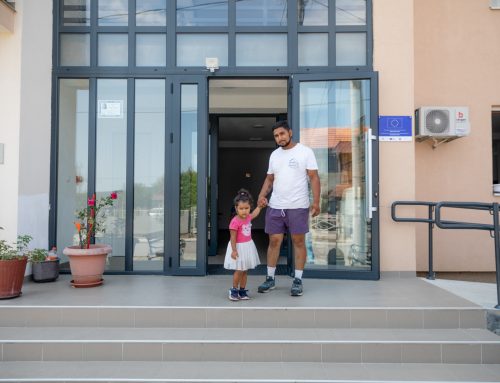The European Commission today announced it had selected 11 universities and research organisations to host European Research Area Chairs (ERA Chairs) funded under the Seventh Framework Programme for Research and Technological Development (FP7).
The Chairs will permit these institutions to develop, in a particular field, the level of excellence required to successfully compete internationally for research funding and effectively widen participation in EU programmes.
What’s the aim of ERA Chairs? Why did the Commission decide to launch this pilot?
Despite efforts deployed at national and European level, the European Union still has significant internal disparities in terms of research and innovation performance. The ERA Chairs initiative aim to narrow this gap by helping institutions attract and maintain top quality researchers in order to create new centres of excellence.
Which institutions were eligible to apply under the pilot call?
To apply for an ERA Chair under the pilot call, the university or research organisation had to be a legal entity located in one of the regions detailed in the FP7 Research Potential Work Programme for 2012-13, which focused on convergence regions.
What was the response to the pilot call?
Extremely positive. The scheme was largely oversubscribed. A total of 111 proposals were submitted for evaluation, including 55 proposals from Member States that joined the EU after 2004. This number exceeded expectations and, due to the high number of excellent proposals received, the original budget foreseen in the Work Programme was doubled from €12 to €24 million.
What was requested from institutions applying for an ERA Chair?
Research organisations appointing an ERA Chair have to commit to put in place the conditions needed to develop excellent research and to fully benefit from the ERA Chair. Such measures should be in line with the smart specialisation strategies for the country/region so that synergies between cohesion and research funding are strengthened. The research organisations must also demonstrate their commitment to implement ERA principles set out in the ERA Communication, such as open and merit based recruitment, gender equality, open access, external peer assessment.
Who appoints the ERA Chairs? How are they chosen?
The European Commission selects the ERA Chair institutions and signs grant agreements with these institutions. Once the grant agreement is signed, the successful institutions are responsible for selecting their own ERA Chairs through an open, fair and merit-based recruitment process, including publishing the vacancy for the ERA Chair on the EURAXESS Jobs portal.
Does the organisation or university have to employ the ERA Chair?
Yes, it is a requirement that the organisation or university employs, through an employment contract or equivalent, the ERA Chair. The Chair should have a position within the organisation/university, professor or similar, that will allow her/him to freely apply for regional, national, European or international funding, in order to develop and raise the level of research excellence of both the team and the organisation/university as well as to successfully compete at international level.
Does the organisation/university have to continue to employ the ERA Chair once the contract ends?
No, there is no requirement in the contract between the European Commission and the organisation/university to employ the ERA Chair beyond the lifetime of the grant. However, beneficiaries are strongly encouraged to exploit synergies with other sources of funding in order to ensure the sustainability of the institutional change process that has been initiated by the ERA Chairs grant.
What is the profile of an ERA Chair?
Prospective Chairs should typically have achieved world-recognised scientific excellence in previous research. Furthermore, they need to have demonstrated leadership and experience of managing research teams. ERA Chairs should fulfil the criteria of a level R3 or R4, according to the profiles of the European Framework for Research Careers:
R3 is an established researcher conducting research independently with a reputation based on excellence in their field. S/he should be able to take the lead in executing collaborative research projects in cooperation with colleagues and project partners forming research consortia and secure funding and resources for their team and projects.
R4 is a leading researcher in their research area or field. S/he is the team leader of a research group or head of an industry R&D laboratory, able to create an innovative and creative environment for research. S/he should be an expert at managing and leading research projects with a proven record in securing significant research funding and resources for their team and projects.
Do ERA Chairs need to be European?
No, the Chairs can be of any nationality.
Can ERA Chairs also be holders of ERC grants?
Yes, there is no incompatibility with ERC grants.
What will happen to ERA Chairs under Horizon 2020, the new EU research framework programme?
Together with teaming and twinning, ERA Chairs are part of a set of measures in Horizon 2020 to tackle Europe’s research/innovation divide and to encourage wider participation in EU-funded research. Issues such as the availability of research funding, institutional rigidities and access to resources hamper the mobility of outstanding researchers to promising institutions in low performing regions. ERA Chairs actions will create the appropriate conditions and opportunities for high quality researchers and research managers to move and engage with willing institutions to improve the excellence of their research and thereby modify their research and innovation landscape.
Which research themes are eligible?
Proposals from all areas of scientific and technological research as defined in the Horizon 2020 Work Programme are welcome. There are no pre-defined priority areas. However, regions cannot do everything in science, technology and innovation. According to the ‘smart specialisation’ strategy, a key element of the Europe 2020 Strategy, Member States and regions should play to their strengths.
Which institutions are eligible to apply for an ERA Chair under Horizon 2020?
To apply for an ERA Chair, a university or research organisation must be a legal entity located in one of the regions detailed in Chapter 15- Spreading Excellence and Widening Participation of Horizon 2020 Work Programme 2014-2015, which focuses in particular on new Member States. Eligibility is based on a composite research indicator which identifies countries with a deficit in innovation and research.
What is the total budget for ERA Chairs in Horizon 2020?
The budget allocated for ERA Chairs under Horizon 2020 is expected to be €240 million (subject to the approval of the budgetary authorities). This should allow for the creation of more than 100 ERA Chairs during the course of the programme.
When will the first call on ERA Chairs under Horizon 2020 be published?
The first call was opened on 11 December 2013 and the deadline for submission of proposals is 15 October 2014. The total budget is €34 million and the maximum EU contribution per ERA Chair is €2.5 million for up to five years. This should allow funding around 15 new ERA Chair projects.
The criteria of a maximum of one successful ERA Chair per country applied to the pilot stage. Is also applicable in H2020?
No, this was specific to the pilot call. The new call does not have this restriction.
First “ERA Chairs” to boost research excellence in 11 regions



